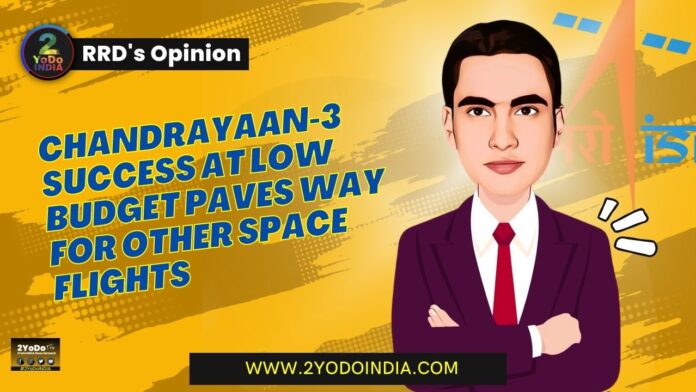When Indian space agency scientists set out to design the Chandrayaan-3 moon mission, they knew they had one more chance to make history with a landing on the lunar south pole after a fail attempt four years ago.
They also had to do it on a shoestring budget and end up spending only Rs. 6.15 billion on the mission.
From managing costs on rockets to developing a built-in-India supply base, the Indian Space Research Organisation’s (ISRO) success with the Chandrayaan-3 moon landing shows how it has refined a system of doing more for less, officials, suppliers and analysts say.
ISRO’s record for frugal innovation will be test by upcoming missions, including a project to study the sun set to launch next month and a plan to put astronauts in orbit.
As India’s government allocate the equivalent of $1.66 billion (approx. Rs. 13,700 crore) for the department of space for the fiscal year ending in March, it spent around 25% less.
The budget for the current fiscal year is $1.52 billion (approx. Rs. 12,560 crore).
NASA has a $25 billion (approx. Rs. 2,06,585 crore) budget for the current year.
Put in other way, the annual increase in NASA’s budget, $1.3 billion (approx. Rs. 10,750 crore) was more than what ISRO spent in total.
ISRO Hopes Chandrayaan-3 Mission's Life to Not Be Limited to One Lunar Day
— 2YoDoINDIA News Network (@2yodoindia) August 24, 2023
For more news visit https://t.co/98KV4yIruC#2YoDoINDIA #ISRO #Chandrayaan3 #Chandrayaan #LunarMission #LunarSurfce #Moon #Earth pic.twitter.com/yCXaFvaxvI
One example of how ISRO contain costs on Chandrayaan-3, it opt to take a longer route to the moon, allowing it to use less powerful and cheaper propulsion systems.
Chandrayaan-3 took more than 40 days to reach the moon, looping through widening orbits to use the Earth’s gravitational force as a slingshot.
While Russia’s Luna-25 mission, which crash before its own attempt landing on the moon’s south pole, had on a more direct course to the moon.
Russia has not disclose what it spent on the fail mission.
ISRO also develop some of the lander components itself, including the cameras, altimeter and hazard avoidance sensors.
It use Indian suppliers for vehicle assembly, transportation and electronics to keep costs low.
And it limit the number of design prototypes to save time and money.
Many of the ISRO scientists who work on the fail Chandrayaan-2 attempt to land on the lunar south pole in 2019 stayed on for the current mission.
ISRO is gearing up to launch the Aditya-L1 spacecraft, a space-based solar observatory, in September.
It has plans to send astronauts to space in a mission ISRO’s S Somanath has said could come by 2025.
ISRO’s success is also expect to provide a lift for the country’s private-sector space start-ups at a time when Prime Minister Narendra Modi’s government is looking to open the sector to foreign investment, as per suppliers.
Rahul Ram Dwivedi (RRD) is a senior journalist in 2YoDoINDIA.
NOTE : Views expressed are personal.




